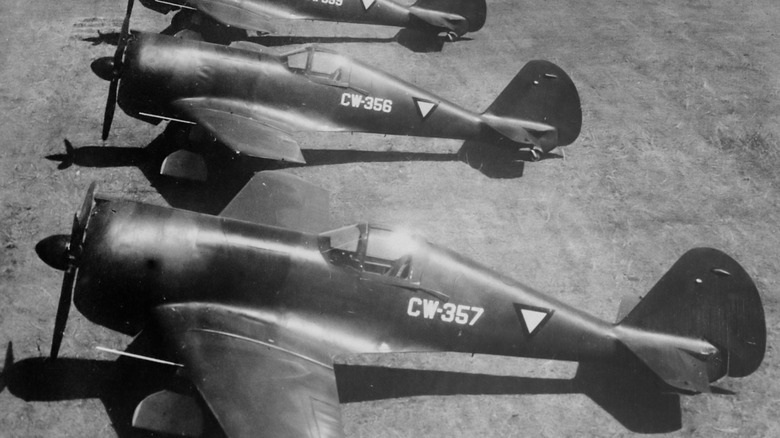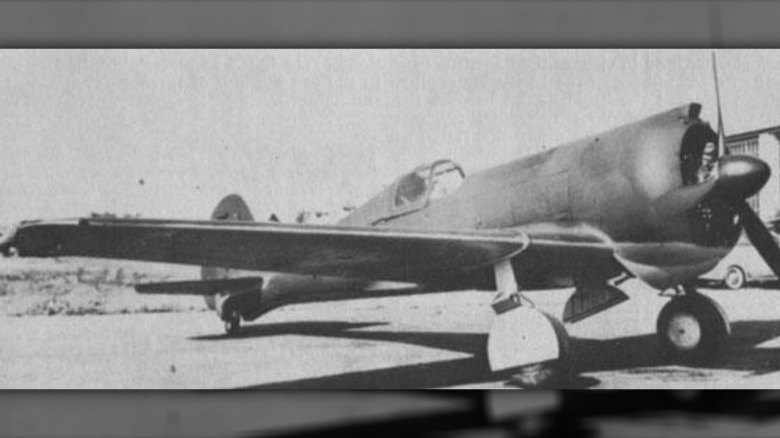The History Of The CW-21 Demon: WW2's Ultra-Fast, Forgotten Fighter
During World War II, nations around the world quickly innovated in a number of technological areas, though few matched the gains in aircraft production. The conflict saw the widespread use of heavy bombers, such as the B-17 Flying Fortress, and fast-moving fighters, like the incredibly agile P-51 Mustang. These aircraft made a difference during WWII, but they were hardly the only ones flying over Europe, Africa, and Asia in the 1930s and '40s.
There are plenty of WWII-era planes that most people will have never heard of before, including the Curtiss-Wright CW-21 Demon. Unlike most American-made aircraft, the CW-21 wasn't flown by members of the United States Army Air Corps and was instead produced exclusively for export. Not many were made, with only 62 rolling off assembly lines during its brief production period in the late '30s and early '40s.
The CW-21's main asset was its climb rate, which was largely unmatched. It allowed armies to use the CW-21 as an interceptor that could climb and meet enemy bombers before they had a chance to drop their payload. To accomplish this, the CW-21 had an operational ceiling of 34,300 feet and a climb rate of 5,000 feet per minute (or 4,500 feet per minute, according to some sources). This made it possible to reach 20,000 feet in under six minutes, allowing the CW-21 to hit its ceiling and potentially intercept enemy bombers in around eight to nine minutes. Despite this, the U.S. military passed on purchasing any CW-21s, leaving them to fly for other nations.
The CW-21 ended up flying for other countries
The first country to receive the now largely forgotten CW-21 Demon was the Republic of China, though the nation had to build most of its CW-21s from shipped parts. In 1940, Curtiss-Wright sent three completed aircraft and parts to construct 27 more to China. Unfortunately, the forces of Imperial Japan took control of the territory where the planes were being built, thereby ending their influence on the Pacific Campaign for a while.
China wasn't the only nation to receive them, as the Dutch Air Force also eyed the interceptor. After placing an order for two dozen CW-21s, the Nazis rather rudely captured the nation, forcing the Dutch to send the order to the Dutch East Indies. The CW-21s ended up flying against Japanese forces, but were overwhelmed by a massive air presence. The majority of CW-21s built during WWII were destroyed in the conflict, having been shot down by enemy aircraft or captured and destroyed.
Some might consider the CW-21 one of the worst fighter planes of World War II, but in reality, it was a speedy interceptor that achieved its intended purpose. The aircraft weighed a relatively light 4,500 pounds and wasn't designed to take on other fighters. Instead, it was outfitted with two 50-caliber M2 Browning machine guns or two 30-caliber M1919 Browning machine guns. These were ideal for shooting bombers out of the sky, and had enough of them been built and put into service, it's possible the CW-21 would be better known today.

